In terms of functional applications, wireless routers are common IT products, but... In terms of product selection, wireless routers do not have the qualities of “standards, standards, and transparent pricing†of conventional IT products. Is the traditional home appliances generally "peach pond water depth of 1,000 feet", so that the domestic high-end wireless router market has long been monopolized by the LAN (Linksys, ASUS, NETGEAR) Big Three, other brands (especially the mainland brands) can only be in the low-end market Foraging.
In fact, the wireless router hardware architecture is really not complicated, nothing more than the "main chip +2.4G wireless chip + 5G wireless chip + switching chip + memory + flash + antenna + peripheral circuit" combination, and with the development of SoC above The architecture is also being gradually simplified, such as the exchange chip has been integrated into the main chip. Therefore, the overall functionality and performance of a wireless router is basically determined by the "mapping of the main chip and the wireless chip," commonly known as the solution.
Similar to the pattern of smart phone processors, the current mainstream solutions for wireless routers are basically chips of brands such as Qualcomm, Broadcom, and MediaTek, thanks to the modularization and maturation of solutions. The threshold for the manufacture and production of wireless routers is getting lower and lower. As a result, many of the initial "smart" wireless routers have sprung up and come out with a variety of eye-catching Internet marketing to make the domestic low-end market for wireless routers a bubble. Full.
In the face of the impact of the new Internet brand, several old traditional brands in the Mainland are under pressure... TP-LINK is well-known for its wealthy reputation at home and continues to play in the mid- to low-end market; Fast and Mercury (MERCURY) A bit of abandoning the rhythm of treatment, the basic deflation is waiting to die in the ultra-low-end market within a hundred dollars; Tenda is actively fighting with the new AC series (AC6, AC9, AC15, AC18), although the AC series is viewed vertically. All of them are like ASUS's RT-AC series in "Sincerity and Tribute", but they are also known to be disgraceful.
The end of the question, returning to the game. Obviously, as the top product of Tenda home wireless router, AC18's strategic significance is very important. Admittedly, regardless of the low-key positioning of the official website of "flagship fever new products", or high-profile announcements on certain occasions "routers in the aliens" worth mentioning, in the final analysis, AC18 is only a 400-600 yuan price of mid-range home wireless router Do not dare to sell more than 800 yuan like its "prototype" ASUS RT-AC68U...
As for whether AC18 can help Tenda break out of the low-end market and successfully enter the mid-range market, there have been a lot of evaluations, disassembles, and experiences. As an ordinary user with limited capabilities, Kim is only one of the blind people who is blind and personal. Use the scene and habits to start talking about experience.
First, light boxUnpacking is very popular, but it cannot be avoided. AC18's packaging is quite satisfactory. The right side of the Tengda logo indicates that the machine adopts Broadcom's solution. The top right corner shows the two most important specifications of the machine: the wireless bandwidth is 1900Mbps, and the Ethernet port is Gigabit. As for the villa, wait for my next life to buy it...
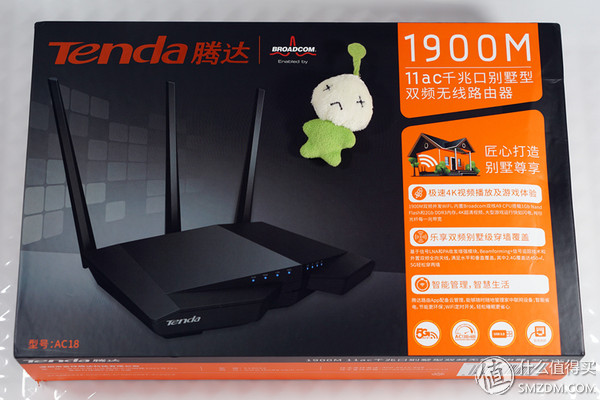
The back of the package basically covers the main functions and specifications of the AC18. The lower left area is the strategic layout of the Tenda AC series. Accurate coverage is from the low end to the middle end. However, there is no difference between the AC15 and the AC18. In fact, the AC18 and AC15 solutions are exactly the same, except that the former has a larger RAM and ROM capacity, and has advantages in brushing and playability, and nothing more.

Open the lid is still not amazed, for the wireless router's midrange players, AC18 five big three black body is also not surprising, inside the box on three things: instructions, AC18 host and accessories box.
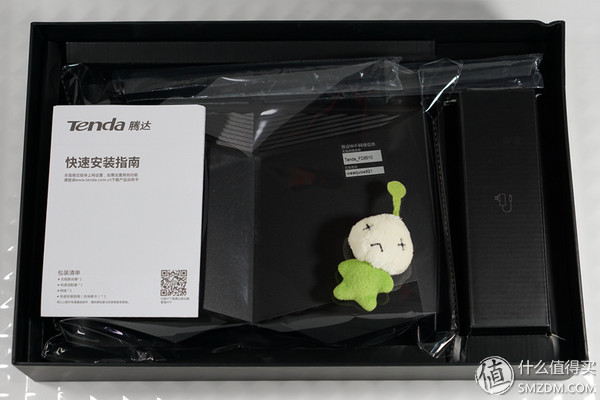
AC18 host is still quite heavy, plastic shell workmanship and texture is good, matte surface will not collect fingerprints, three non-detachable antenna and body design language are the same, are alien style.
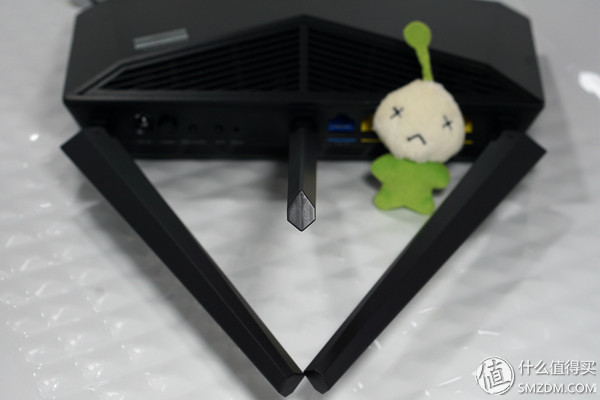
The three antennas have the same range of motion and are all folded at 90 degrees + 220 degrees rotation. It is very convenient for both horizontal and wall mounting. The back button of the host is very complete, the power switch + wireless switch + WPS key + reset button, this is exactly the copy AC68U design has wood, but at least after the restart the host without having to pull the plug.
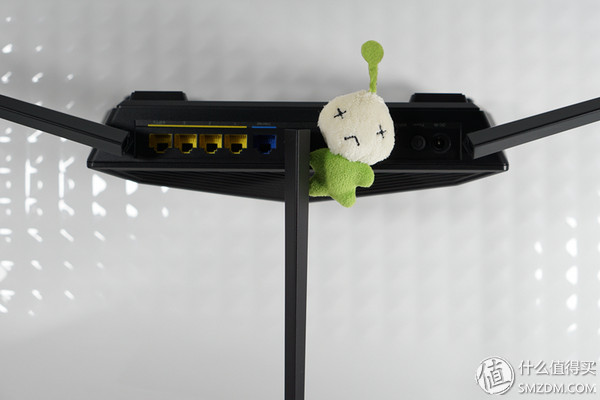

AC18's cooling holes are quite a few. They are on the top, on both sides, and on the bottom. Considering that the main processor of the unit is the "hot" Broadcom BCM4708A, it is not surprising to prepare a laptop for AC18 cooling. The base is still necessary to drop.
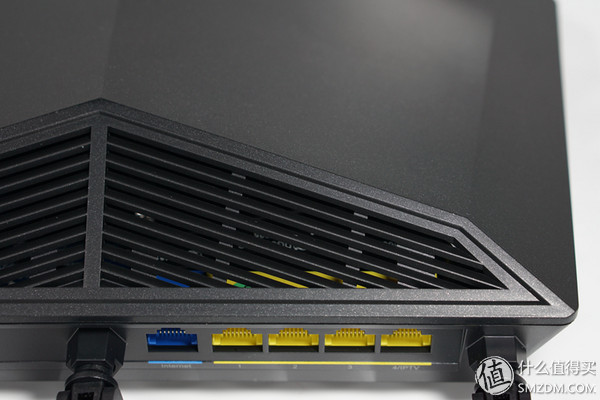
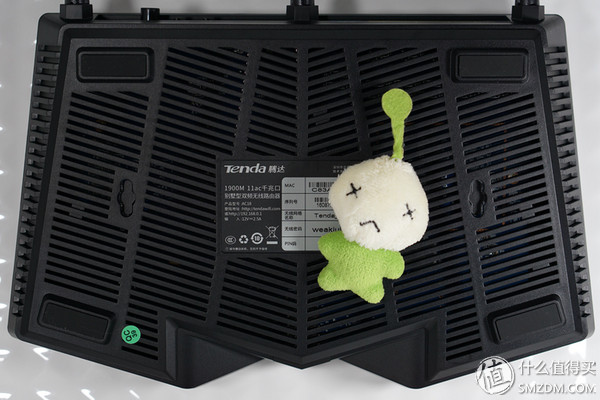
There are two items in the accessory box: power adapter and super five cable. It is worth mentioning that the power adapter with the Tenda logo is not only a wide voltage input but also a modular plug, which is obviously for the international market.
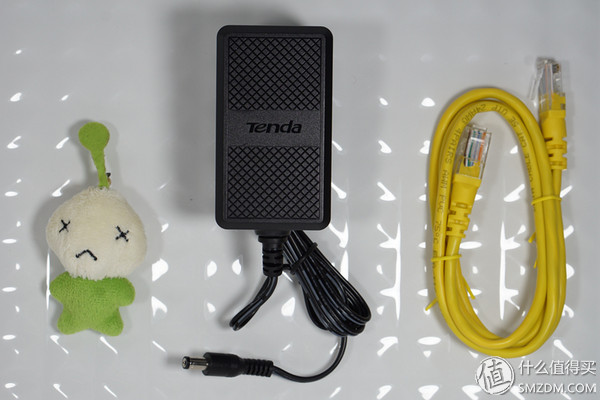
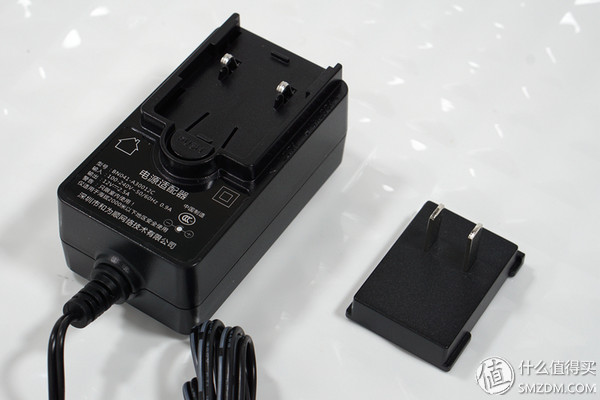
The civilian evaluation ability is limited, there is no massive knowledge of the reserves, there is no professional testing tools, simply Kim brought the material to fall into the ring, so Tengda AC18 directly with the only two wireless routers at hand to map. Well, I admit that, simply from the personal use of scenes and habits, the so-called evaluation is not fair and objective, if not properly, please criticize ~
The two owners are the Linksys EA6500 V2 and the Fiji K2 (PSG1218), which are also the most representative wireless routers on the market. Although the former is slightly inferior to the AC18 in configuration, it is the same price as the AC18. The latter is a typical Internet cash crop, and it is the cheapest AC1200 wireless router on the market.
Light from the appearance can distinguish the three grades, obviously, two black cats are midrange machines, and white cats are low-end machines. The already burly EA6500 encountered AC18 and could only hand over the "five-big, three-thick" pennants. In passing, the international giant's mainframe design was again simple and stylish. It looks like the ghost alien is more like AC18.
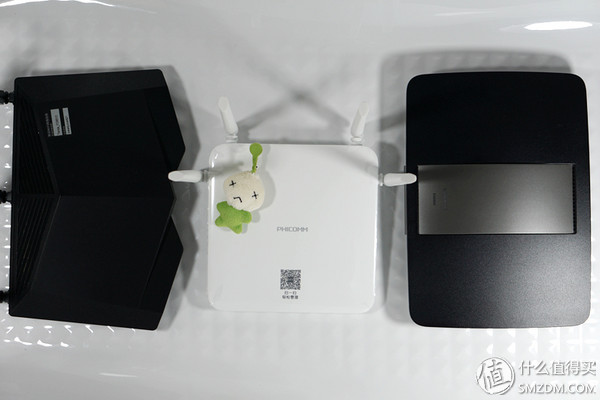
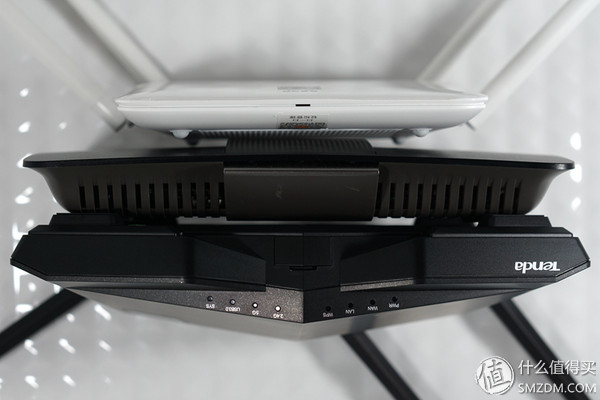
Details of the household registration information of the three players are shown in the table below. Unexpectedly, AC18 and EA6500 were half-brothers, and the two are surprisingly uniform. The biggest difference is that AC18 uses a higher-end 2.4G wireless chip, so it can push 2.4G wireless bandwidth to 600Mbps. As for the differences between the two in terms of antenna and weight, the actual impact on the actual situation is also the focus of this evaluation. (Nei, have you considered the feeling of K2? People are also contestants, not to soy sauce drops...)
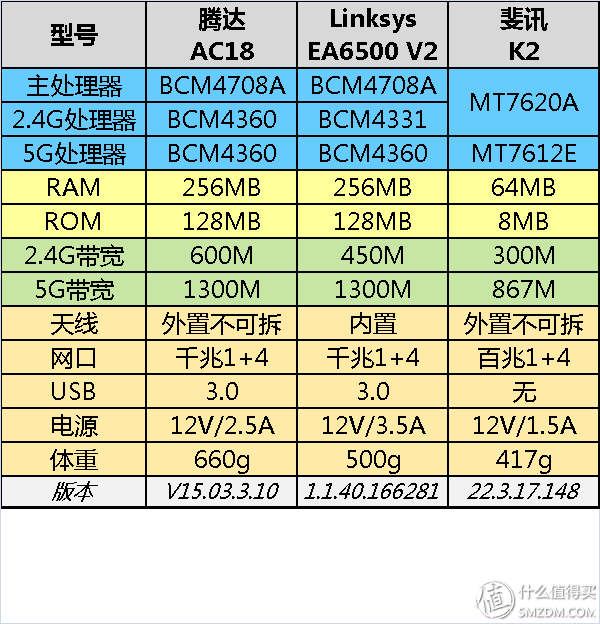
For the average user, the three have little difference in functionality, and they can basically meet the needs of home Internet access. Of course, if you want to build a home LAN or NAS, K2 without Gigabit switching ability can go after soy sauce. In terms of ease of use, it is clear that the UI of domestic brands is more gracious, at least not like the full English interface of Linksys.

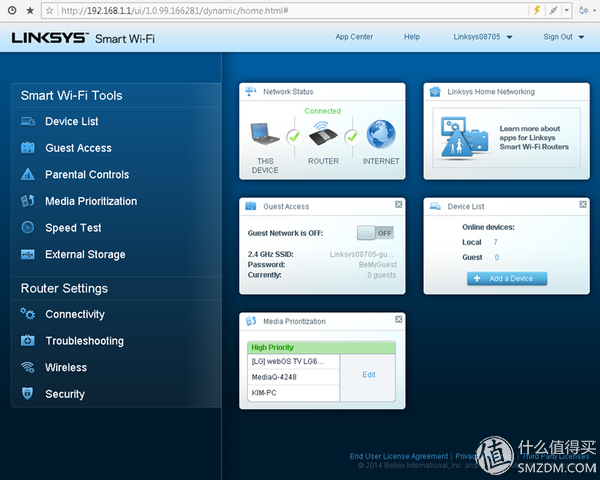
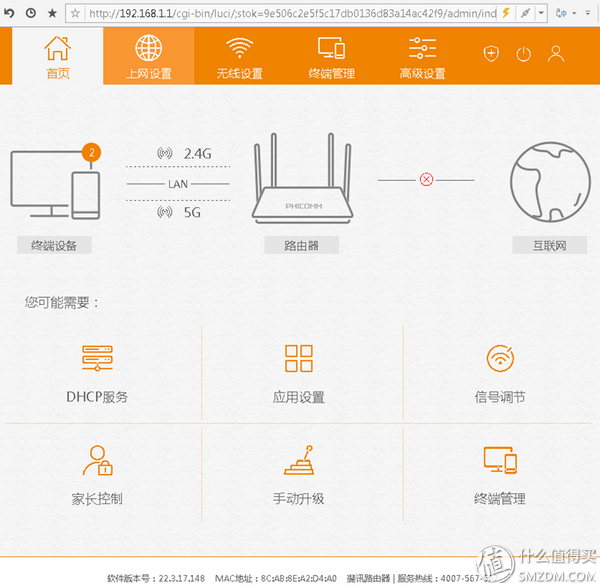
For geek players, all three support third-party firmware, but suffer from the constraints of RAM/ROM capacity and the lack of USB interfaces. The K2, which doesn't have money, is ultimately losing its playability. When it comes to brushing machine difficulty, I had to like something for Tenda. AC18 is a good brush by nature. It is one of the few wireless routers on the market that comes with a third-party Bootloader. When the EA6500 had to spend a lot of time to brush up on the CFE (one of the third-party bootloaders) in order to brush Merlin, when K2 had to first brush Breed (third-party Bootloader II) in order to brush third-party firmware, the AC18 was shipped from the factory. Bringing the CFE mode is really a whitewashing gospel. However, Fu unparalleled, although the AC18's brush threshold is not high, but the third-party firmware is pitifully, basically only AC68U's food to eat, but also occasional indigestion, the wood is basically for the AC18 third-party special edition Firmware, sigh. (It doesn't matter if you don't understand the above paragraph. When Kim is running away, Kim is too lazy to flash before any stable special firmware is released.)
The platform used in this field competition is purely natural and not specifically constructed. Instead, it directly applies Kim's home use scene. As shown in the figure below, the wireless router is located at the entrance of the living room, next to the download machine (actually a laptop computer), both connected by the LAN port; the main PC is located in the large room, and hangs the USB wireless network card (netware A6210) to WiFi Connected to a wireless router for Internet access and downloader access. (Editor's Note: The serial numbers of the four rooms only represent the size of the room and do not represent room use or family relationships.)
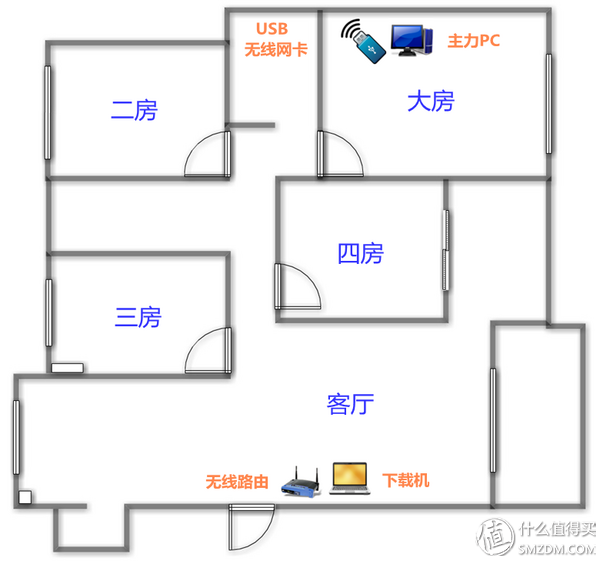
The A6210 is the highest-end NETGEAR USB wireless network adapter. Although the specification is far inferior to the Asus USB-AC68, it also has the strength of the AC1200. The 5G wireless bandwidth = 867 Mbps and the 2.4G wireless bandwidth = 300 Mbps. The key is the cordial price. All the following test items are basically dependent on the A6210 to complete the drip on the main PC of the big room.
Here the PC-side installation inSSIDer tool is used to monitor air quality, oh no, detect WiFi signal strength. In order to simplify the testing process, the main PC and the A6210 maintain their daily use status. They only perform fixed-point testing and do not perform multi-point testing. That is, all the items in this evaluation only consider the network quality of the main PC hanging USB wireless network card in the large room, and do not detect the situation of 234 rooms or even the toilet balcony. One is because I am lazy, and the other is because the large room is the whole house WiFi. Where the signal is weakest, tests on large rooms are adequately representative. Signals in other areas are better than those in large rooms.
In order to ensure a fair play, three wireless routers are horizontally arranged side by side in the shoe cabinet at the entrance of the living room, and at the same time, 2.4G (channel=1, bandwidth=40M) and 5G (channel=149, bandwidth=80M) are turned on wirelessly. Signal, and without any load. The A6210 is only used for WiFi signal detection and is not connected to any wireless network. Remarks: AC18's SSID=Tenda..., EA6500's SSID=Linksys..., K2's SSID=PHICOMM...
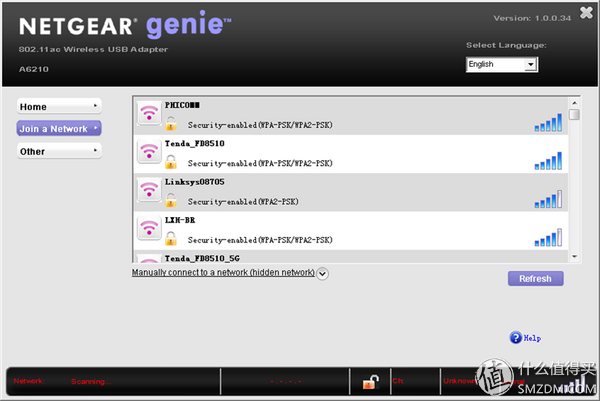
Test Case A: 2.4G Band Signal Test, AC18 Signal Strength = Low Power Consumption
Conclusion: AC18 and K2 keep pace, the signal strength is about 10dBm ahead of EA6500, popularly speaking, the signal strength of AC18/K2 is about ten times that of EA6500!

Test Case B: 2.4G Band Signal Test, AC18 Signal Strength = Enhanced
CONCLUSIONS: The signal intensity of AC18 increased by 6 dBm after hitting chicken blood, which was a four-fold increase, as if the Hulk was possessed. Do not know whether it was frightened by the Hulk, the K2 and EA6500 signal strength decreased slightly.
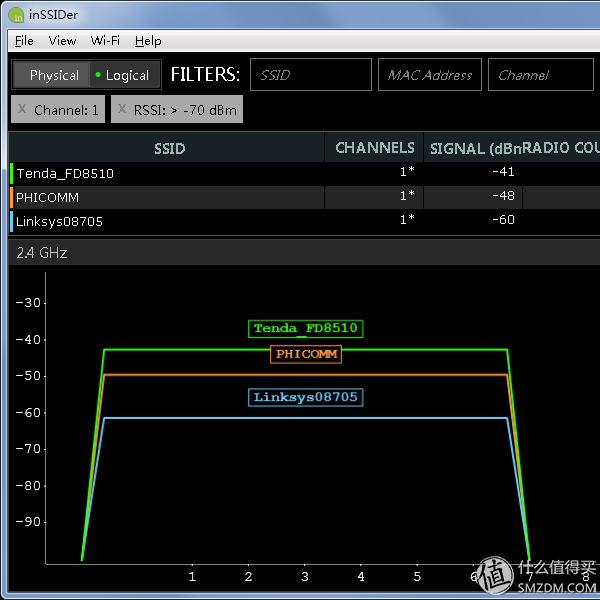
Test Case C: 5G Band Signal Test, AC18 Signal Strength = Low Power Consumption
Conclusion: The accident came too suddenly. I didn't expect that the strongest 5G signal was actually K2. It was easy to throw off both AC18 and EA6500.
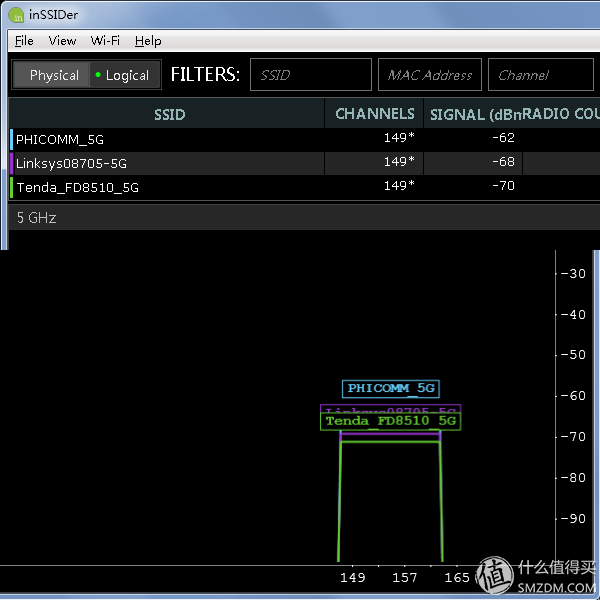
Test Case D: 5G Band Signal Test, AC18 Signal Strength = Enhanced
Conclusion: Even with chicken blood, AC18 didn't turn into a Hulk this time.
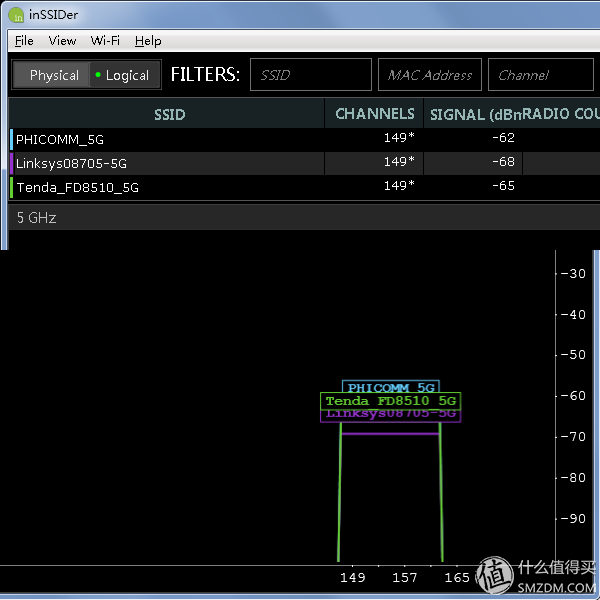
It is worth noting that AC18 also has a "Beamforming (Beamforming) technology" that claims to increase the speed and stability of wireless signals. Well, it's known. During the entire testing process, whether the mode was enabled or not had no effect on performance. The results of this round of tests are summarized as follows:
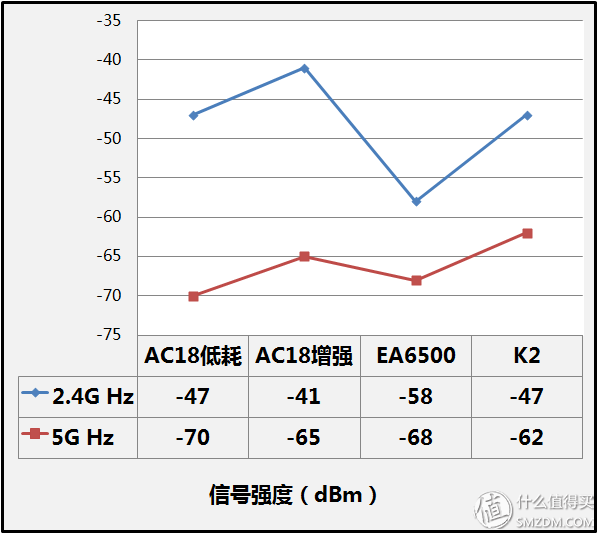
Here, connect three wireless routers with the A6210, and observe the WiFi interface bandwidth displayed by the NETGEAR Genie (management software of the A6210) on the PC. At the same time, ping the gateway on the PC to measure the wireless network quality (delay and packet loss). In order to stick to and use the environment as much as possible, each test only turns on the wireless router to be tested, and the other two players are in the off state to reduce unnecessary interference; at the same time, the wireless router to be tested simulates a medium load, and the LAN port downloads the BT download. , 2.4G wireless box to watch online video, 2.4G wireless with a mobile phone WiFi standby; other settings and the same as the previous round; long ping time of not less than 1 minute, and test twice and record the results in order to try to be objective just.
Screenshots are as boring as the testing process, simply skipping the truth directly.
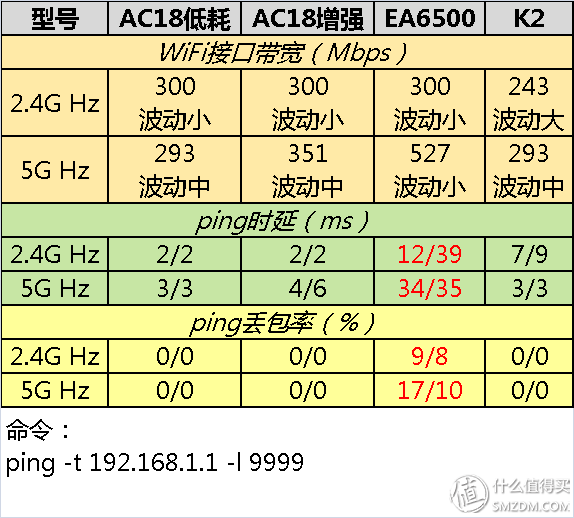
2.4G band: Limited by the peak bandwidth of the A6210 (300Mbps), the WiFi interface bandwidth does not significantly widen the gap, and both the AC18 and the EA6500 can be stabilized at 300Mbps; however, the ping test is not so optimistic, and the EA6500 is seriously hampered by BT download. No matter whether it is time delay or packet loss, it will be "out of the top ranks". Only by suspending the download will the EA6500 be able to achieve the same AC18 score.
5G band: The WiFi interface bandwidth test result is very different from the first round (signal strength test). Before the strongest signal K2 was under attack, the EA6500 that was almost at the bottom of the game could easily win the title; but the result of the ping test is basically the same as the 2.4G case. It seems that the EA6500 is very sensitive to the load.
V. Transmission speed test (third round)The first two rounds are just warm-ups. In fact, what signal strength, interface bandwidth, and network quality are the side effects, the actual transmission speed is the most real performance of wireless routers. In this round, K2, which only supports 100M exchange, has already abstained, because its running leg is about 10MB/s, which is not comparable to the midrange machine.
The test environment and system settings remained basically the same. It was still a fixed-point long distance obstacle race that crossed two walls. Each round of testing only enabled the wireless route to be tested; the wireless router under test simulated a light load, in which the LAN port was downloaded without a download, the 2.4G wireless band watched the online video, and the 2.4G wireless phone was a WiFi standby.
The test method is very simple. Use FastCopy and the downloader to copy files from each other on the PC. Copy the object to a video file of 2857 MB. Test the transfer speed from the “Download to PC†and “Copy from PC to Downloader†conditions. They represent the downlink and uplink of WiFi.
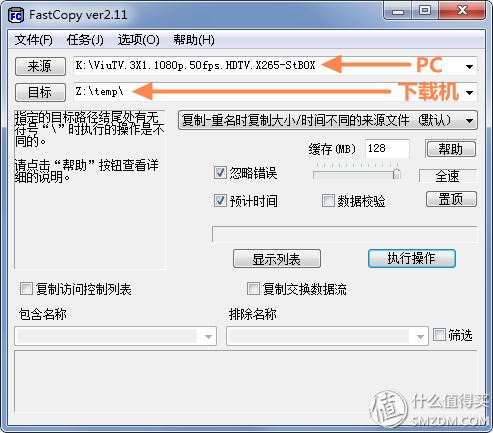
Screenshots are as boring as the testing process, and again unexpectedly, go straight to the truth.

2.4G band: AC18 finally played on the chip's advantage (using a higher-end 2.4G wireless chip), both downstream and upstream, faster than the EA6500. Taking into account the A6210 dragging the leg, it can be expected that with the high-end wireless network card, the AC18's 2.4G transmission rate should be comparable to 5G.
5G band: scared to death baby ~ almost thought that the AC18 is not set properly. To be honest, under the same conditions for the two chips, we didn't expect the AC18's 5G transmission rate to be as brave as 2.4G, but at the very least, it should be equal to it. After repeated verification, regardless of the chicken blood mode or the bee-bee mode, AC18 is always slow to take a shot, and finally can only think of posture problems.... Sure enough, use the notebook cooling base to change AC18's sitting position from horizontal to Beijing. After a 45-degree angle), the transmission rate is slightly improved, even if "low-power + Beijing 瘫" can catch up with "enhanced + horizontal".
Sixth, video roundFinally add an irresponsible temperature test. The reason why it is irresponsible is because I don't have any testing tools. I rely on a pair of palms. Throughout the testing process, the top body temperature ranking of the three players was: EA6500>AC18>>K2. Although the EA6500 doesn't look like an induction cooker, it definitely has the effect of an induction cooker. When the load is working for a long time, the temperature is a bit hot; the temperature of the AC18 is slightly lower. Even if the chicken blood mode is turned on, it cannot catch up with the heat of the EA6500. In the machine map, the heat sink of AC18 is larger in size, and it seems that the difference in weight can be reflected in the use of materials to a certain extent; the last K2 is a model that does not need to worry about heating at all, and at most it is just micro-heat.
End, thanks for watchingFirst of all, thanks to the Fiji K2 that came specifically for soy sauce, as a 100M exchange AC1200 wireless router, although the official guide price is close to the positioning of the midrange machine (400-600 yuan), but from the free fish traded price and current evaluation From the results, it is considered a good low-end machine. As for the Linksys EA6500 V2 and Tenda AC18, it's really tit for tat as their price points. The former is stronger with 5G and the latter is stronger with 2.4G. There is no absolute winner for the contest between them.
Although Tenda's AC series has more or less the shadow of Asus, although the AC18 targeting the Asus RT-AC68U can only be tied with the EA6500, the AC18 becomes a real midrange with its rich features and good performance. The wireless router, Tenda’s ambition and courage are worthy of recognition. Obviously, AC18 is not an "alien in the router" at all. It is rather auspicious that Tenda is more like an alien in the brand of wireless routers on the mainland.
SMT Motor
SMT Motor, original and new ,in stock, quality gaurantee.
SMT motor : actuator motor,servo motor, converyor motor,rail motor, bom stepping motor, rizing motor, Z camera motor, Y camera motor, X camera motor.
Smt Motors
Smt Juki Motors
Original Smt Servo Motor
Original Smt Motors
Holder For Smt Type
Smt Battery Holder
SMT Holder
Battery Holder
Filter For Smt Machine
High Quality Smt Filter
Smt Filter
Smt Machine Filter
Smt Tape Feeder Parts
Feeder Parts For Smt Machine
Smt Machine Spare Parts
Original SMT Feeder
Original SMT Cable
Smt Machine Cable
Smt Spare Parts Fuji Cable
Smt Cable
SMT Belt
Smt Siemens Belt
Smt Juki Belt
Smt Conveyor Belt
Smt Camera
Smt Laser
Camera For Smt
Smt Siemens Camera
Smt Parts Plastic Rail
Smt Plastic Rail
Smt Juki Plastic Rail
Juki Plastic Rail
SMT Nozzle For Yamaha
Yamaha Nozzle
Nozzles For Yamaha Machine
Smt Yamaha Nozzle
Smt SIEMENS Nozzle
Nozzles For Siemens Machine
Smt Nozzle For Siemens
Siemens Nozzle
Smt Nozzle For Samsung
Nozzles For Samsung Machine
Smt Samsung Nozzle
Panasonic Nozzle
Smt Panasonic Nozzle
Smt Nozzle For Panasonics
Nozzles For Panasonic Machine
Smt Juki Nozzle
Nozzles For Juki Machine
Juki Nozzle
High Pressure Juki Nozzle
I-Pulse Nozzle
High Pressure I-pulse Nozzle
Nozzles For I-pulsemachine
Smt I-pulse Nozzle
High Pressure FUJI Nozzle
Nozzles For Fuji Machine
Fuji Nozzle
Smt Fuji Nozzle
Smt Nozzle
Smt Parts Nozzle
Smt Nozzle For Machine
Smt Spare Parts Nozzle
Yamaha Smt Feeder
YAMAHA Feeder
Smt Machineyamahafeeder
Smt Feeder For Yamaha
Smt Feeder For Siemens
Smt Machine SIEMENS Feeder
Siemens Smt Feeder
Siemens Feeder
Samsung Smt Feeder
Smt Machine SAMSUNG Feeder
Samsung Feeder
Smt Feeder For Samsung
Panasonic Smt Feeder
Panasonic Feeder
Smt Machine Panasonic Feeder
Smt Feeder For Panasonic
Smt Feeder For Juki
JUKI Feeder
Juki Smt Feeder
Smt Machine Juki Feeder
I-Pulse Feeder
Smt I-pulse Feeder
Smt Parts I-pulse Feeder
I-pulse Type Feeder
Pneumatic Feeder
FUJI Feeder
Smt Fuji Feeder
Fuji Smt Tape Feeder
Smt Machine Feeder
Smt Tape Feeder
Smt Feeder
Feeder For Smt Machine
Siemens Control Valves
Smt Siemens Valve
Siemens Vacuum Valve
Siemens Valves
Smt SAMSUNG Valve
Samsung Vacuum Valve
Samsung Control Valves
Samsung Valve
Juki Vacuum Valve
Juki Ejector
Juki Vacuum Ejector
Juki Valve
Smt Motors,Original Smt Motors,Smt Juki Motors,Original Smt Servo Motor
Shenzhen Srisung Technology Co.,Limited , https://www.sr-smt.com